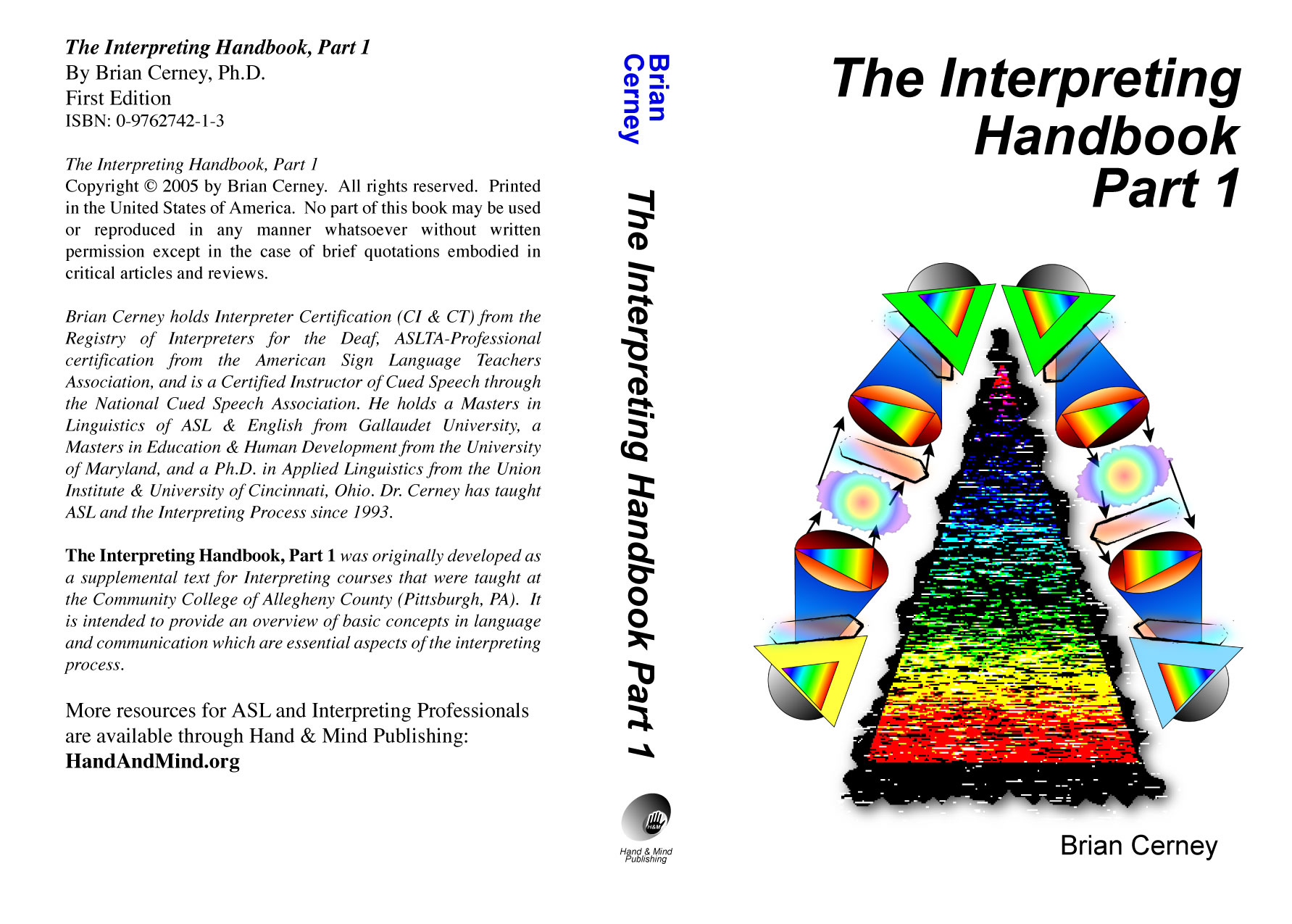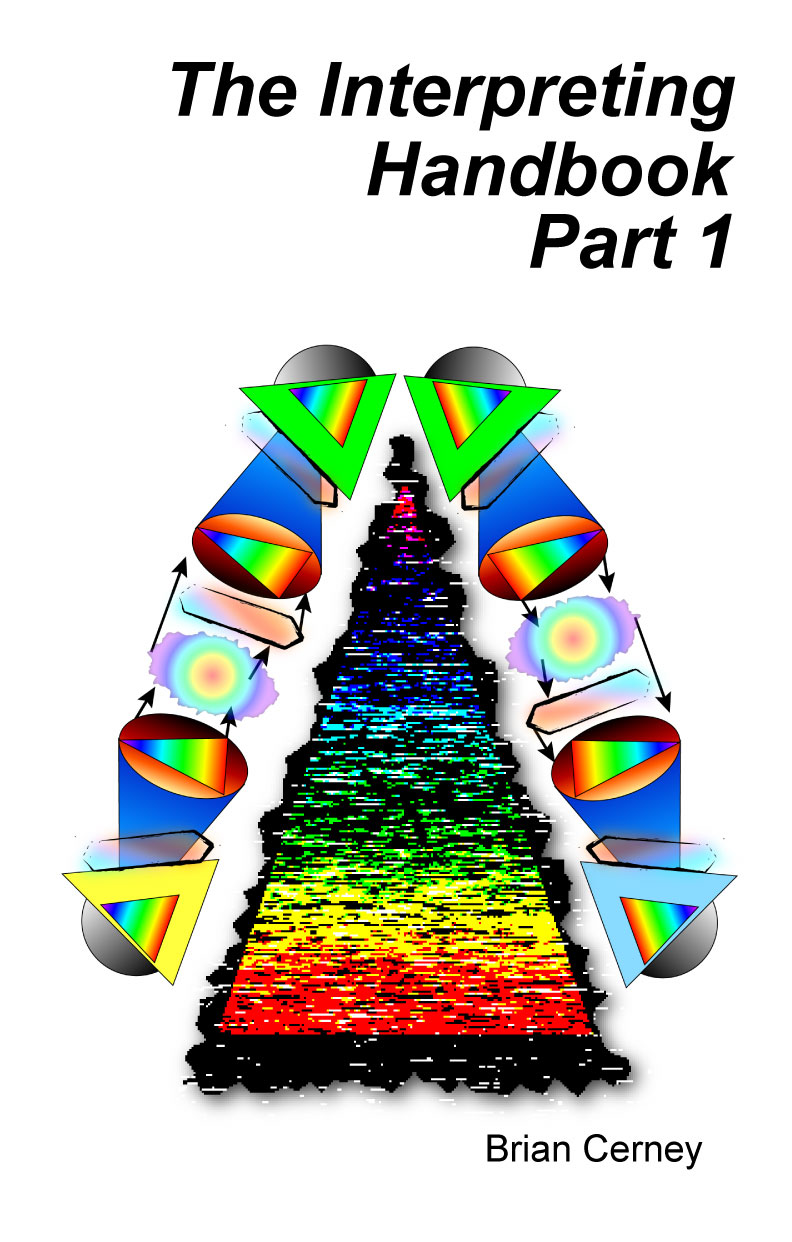

Table of Contents
UNIT ZERO - Metachapter
ii Preview
iii The Graph and the River
iv Table of Contents
xi1 List of Figures
2 Chapter 0 - The Metachapter
2 “Meta-Dialogue”
4 0.0 The Overview
4 0.1 The Author
8 0.2 The Book
10 0.3 The Summary
UNIT ONE - Communication and Language
12 Chapter 1 - Communication
12 “Communication”
14 1.0 Overview
14 1.1 Communication and Language
16 1.2 Background Knowledge
17 1.3 Semiotics - The Nuts and Bolts of Communication
18 1.3.1 Expressive Modalities of Communication
18 1.3.2 Perceptive Modalities of Communication
19 1.3.3 Production and Perception of Non-linguistic Communication
21 1.4 Physical Context
23 1.5 Pragmatics - Doing Things Through Communication
23 1.5.1 Meaning Versus Communication
24 1.5.2 Expression and Perception Versus Meaning
24 1.6 Variation in Communication
25 1.6.1 Intention Versus Incidence
25 1.6.2 Immediate Versus Delayed Access
26 1.6.3 Amount of Interactivity
27 1.6.4 Simultaneous Occurrence of Variables in Communication
28 1.7 Summary
29 1.7.1 Review Questions
29 1.7.2 Suggested Activities
30 Chapter 2 - Language
30 “Language”
32 2.0 Overview
32 2.1 What is Language?
33 2.2 Channels and Modes
35 2.3 The Linguistic Pyramid
36 2.3.1 Phonetics
36 2.3.2 Phonology
38 2.3.3 Morphology
40 2.3.4 Syntax
41 2.3.5 Semantics
43 2.3.6 Discourse and Pragmatics
44 2.3.7 Style and Idiolect
45 2.3.8 Register and Register Variation
47 2.4 Language Comprehension, Expression and Development
49 2.5 Language as a Subset of Communication
51 2.6 Summary
51 2.6.1 Review Questions
51 2.6.2 Suggested Activities
52 Chapter 3 – Language Use
52 “Language Use”
54 3.0 Overview
54 3.1 Pragmatics Revisited
55 3.1.1 Grice’s Maxims
56 3.1.2 Direct Speech Acts
58 3.1.3 Indirect Speech Acts
59 3.1.4 Conversational Implicature
60 3.2 Discourse Analysis
60 3.2.1 Discourse Analysis of Narratives
61 3.2.2 Discourse Analysis of Conversations
62 3.3 Language Fluency
63 3.3.1 BICS and CALP
64 3.3.2 A, B, and C Languages
65 3.3.3 Multilingual, Monolingual, and Semilingual Language Abilities
66 3.4 Summary
67 3.4.1 Review Questions
67 3.4.2 Suggested Activities
68 Chapter 4 - Language Variation
68 “Language Variation”
70 4.0 Overview
70 4.1 Language Variation
71 4.1.1 Dialect Variation
71 4.1.2 Sociolect Variation
73 4.1.3 Register Variation
73 4.1.4 Idiomatic Language Use
73 4.1.5 Language Contact
73 4.2 The History of ASL Language Contact Research
74 4.2.1 Stokoe’s Research on ASL Variation
75 4.2.2 Woodward’s Research on ASL Variation
76 4.2.3 Other Research on ASL Variation
77 4.2.4 Summary of ASL Variation Research
78 4.3 A Revised Model of Language Contact in ASL
81 4.4 Register Variation in ASL
82 4.5 Summary
83 4.5.1 Review Questions
83 4.5.2 Suggested Activities
84 Chapter 5 - Language Encoding Systems
84 “Language Encoding Systems”
86 5.0 Overview
86 5.1 Signs and Signed Phonemes
86 5.1.1 Handshape
90 5.1.2 Location
91 5.1.3 Movement
92 5.1.4 Palm Orientation
92 5.1.5 Mouth Movements
92 5.2 Speech and Spoken Phonemes
93 5.2.1 Consonants
94 5.2.2 Vowels
95 5.3 Writing and Orthography
95 5.4 Specialty Encoding Systems
95 5.4.1 Manual Cues
102 5.4.2 Braille
102 5.4.3 Fingerspelling
105 5.4.4 Morse Code
106 5.4.5 Semaphore
106 5.4.6 Secret Codes
108 5.5 Summary
109 5.5.1 Review Questions
109 5.5.2 Suggested Activities
110 Chapter 6 - Pidgins, Creoles, & Other Things
110 “Pidgins, Creoles, & Other Things”
112 6.0 Overview
112 6.1 Natural Pidgins and Creoles
113 6.1.1 Spoken Language Pidgins
113 6.1.2 Signed Language Pidgins
114 6.1.3 Summary of Natural Pidgins
114 6.2 Esperanto, Gestuno and International Signing
115 6.3 Artificial Intermodal Pidgins
117 6.3.1 The Origins of American Manual English Codes
118 6.3.2 LOVE, SEE1, and SEE2
119 6.4 Summary
119 6.4.1 Review Questions
119 6.4.2 Suggested Activities
UNIT TWO - Transcommunication
120 Chapter 7 - Transcommunication
120 “Transcommunication”
122 7.0 Overview
122 7.1 Transcommunication
123 7.2 Extralingual Transcommunication: Elucidation
125 7.2.1 Elucidation of Environmental Stimuli
126 7.2.2 Elucidation of Visual Gestural Communication
127 7.2.3 Elucidation of International Signing and Gestuno
127 7.2.4 Elucidation of Natural and Artificial Pidgins
128 7.2.5 Summary of Extralinguistic Transcommunication
128 7.3 Monolingual Transcommunication: Shadowing & Transliterating
129 7.3.1 Recited Reading
130 7.3.2 Transcription
130 7.3.3 Transliteration
133 7.3.4 Shadowing
134 7.3.4 Summary of Intralinguistic Transcommunication
134 7.4 Bilingual Transcommunication: Interpreting & Translating
134 7.4.1 Translation
136 7.4.2 Simultaneous Interpreting
137 7.4.3 Consecutive Interpreting
138 7.4.4 Site Translation
139 7.4.5 Recorded Interpretation
139 7.4.6 Performed Translation
140 7.4.7 Summary of Interlinguistic Transcommunication
141 7.5 Summary of Transcommunication
142 7.6 Chapter Summary
143 7.6.1 Review Questions
143 7.6.2 Suggested Activities
144 Chapter 8 - Teamed Transcommunication
144 “Teamed and Relayed Transcommunication”
146 8.0 Overview
147 8.1 Overuse Syndrome and Stress Management
149 8.2 Teamed Transcommunication - Working Together
149 8.2.1“A”, “B”, and “C” Roles of Interpreters
150 8.2.2 Exchanging Team Member Roles
152 8.2.3 Teaming based on Language Fluency
152 8.2.4 Procedures for Teamed Transcommunication
153 8.3 Relayed Transcommunication
155 8.3.1 Relayed Elucidation
155 8.3.2 Relayed Transliteration
156 8.3.3 Relayed Interpretation
156 8.4 Summary
157 8.4.1 Review Questions
157 8.4.2 Suggested Activities
158 Chapter 9 - Processing Levels
158 “Processing Levels”
160 9.0 Overview
160 9.1 Consecutive Versus Simultaneous Processing
161 9.2 Communication Variables and Transcommunication Choices
163 9.3 Literal Processing, Idiomatic Processing, & Cultural Adjustment
164 9.4 Information Processing Levels
165 9.4.1 Phonological (Sublexical) Processing
165 9.4.2 Lexical Processing
166 9.4.3 Syntactic Processing
166 9.4.4 Semantic Processing
166 9.4.5 Pragmatic Processing
167 9.4.6 Stylistic (Whole-Text) Processing
168 9.4.7 Summary of Processing Levels
168 9.5 Labels Within the Profession of Interpreting
169 9.5.1 Literal and Idiomatic Interpreting
170 9.5.2 Reasons to Choose Literal Interpreting
171 9.6 Summary
171 9.6.1 Review Questions
171 9.6.2 Suggested Activities
172 Chapter 10 - Interpreting History & Research
172 “Interpreting History and Research”
174 10.0 Overview
174 10.1 The Profession of Spoken-Language Interpreting
175 10.2 The Profession of Signed/Spoken-Language Interpreting
176 10.2.1 The Registry of Interpreters for the Deaf
178 10.2.2 The Association of Visual Language Interpreters of Canada
178 10.3 Research on the Interpreting Process of Spoken Languages
181 10.4 Research on the Interpreting Process Including
a Signed Language
183 10.5 Components of the Interpreting Process
185 10.6 Register Variation and Interpreting
186 10.7 English-Influenced ASL Variation and Interpreting
188 10.8 Relayed Interpreting
190 10.9 Relayed Interpretation From English To American Sign
Language Via A Hearing And A Deaf Interpreter (Cerney, 2004)
192 10.9.1 Research Methods
192 10.9.2 Summary of the Research Results
192 10.9.3 Message Accuracy
192 10.9.4 Processing Time
194 10.9.5 Differences in Grammar and Style
194 10.9.6 Private Communication Between the Team Members
195 10.10 Summary of the Literature
197 10.10.1 Review Questions
197 10.10.2 Suggested Activities
198 Chapter 11 - Models of Transcommunication
198 “Models of Transcommunication”
200 11.0 Overview
200 11.1 Metaphors for Interpreting
200 11.1.1 The Helper Metaphor
200 11.1.2 The Conduit Metaphor
201 11.1.3 The Mediator Metaphor
203 11.2 Models of Interpreting
203 11.2.1 The Gerver Model
204 11.2.2 The Moser-Mercer Model
206 11.2.3 The Ingram Models
207 11.2.4 The Cokely Model
208 11.2.5 The Llewellyn-Jones Model
209 11.2.6 The Colonomos Models
212 11.2.7 The Kirchoff Model
214 11.3 Models of Literal Interpreting
214 11.3.1 The Colonomos Model
215 11.3.2 The Llewellyn-Jones Models
217 11.4 Summary
218 11.4.1 Review Questions
218 11.4.2 Suggested Activities
220 Chapter 12 – Five More Models
220 “Five More Models”
222 12.0 Overview
222 12.1 The Need for Another Model of Interpreting
223 12.2 Review of Communication and Language
224 12.2.1 Review of the Linguistic Pyramid
225 12.2.2 Review of Language as a Subset of Communication
227 12.3 From the Mind to a Text
227 12.3.1 Sociolinguistic Frame
228 12.3.2 Message Preparation and Productive Semantics
229 12.3.3 Monitor
229 12.3.4 Errors
230 12.3.5 The Eight Cs of Linguistic Texts
230 12.3.6 Summary of Expressed Communication
231 12.4 From a Text to the Mind
231 12.4.1 Comprehension of a Linguistic Text
233 12.4.2 Noise, Clarification Requests, and Feedback
234 12.5 Proposed Models of Linguistic Communication
236 12.6 Five Proposed Models of Transcommunication
236 12.6.1 Proposed Model of Translation
237 12.6.2 Proposed Model of Consecutive Transcommunication
238 12.6.3 Proposed Models of Simultaneous Transcommunication
242 12.6.4 Comprehension and Production
243 12.6.5 Proposed Model of Teamed Transcommunication
245 12.6.6 Proposed Model of Relayed Transcommunication
247 12.6.7 Linguistic Processing Within the Models
249 12.7 Application of the Models
251 12.7.1 Boundaries
253 12.7.2 Four Predictions for Bilingual Transcommunication
254 12.7.2 Transcommunication Errors
255 12.7.2 Measuring Performance
257 12.8 Summary
260 12.8.1 Review Questions
260 12.8.2 Suggested Activities
Bibliography and Appendices
261 “The End is Only A Beginning”
264 Bibliography
279 Appendix A - RID Policies and Guidelines
279 Tips From the Raters
279 What is “Transliteration?”
280 What Is Interpreting?
281 Description of the RID CI and CT Rating Scales
282 Appendix B - Ethical Guidelines
282 RID Code of Ethics
283 AVLIC Code of Ethics
284 AIIC Ethical Guidelines
286 Cued Speech Transliterators Code of Ethics
288 Appendix C - Practice Source Texts
288 U. S. Constitution
296 The Amendments to the Constitution of the United States
304 Appendix D – Ten Cs Target Text Evaluation Form


